One our most popular blog posts on the site is “Sourcing Wood For Spoon Carving”. It has information on where to find green wood for carving and some great additional information and ideas from other carvers who shared their knowledge on this subject.
Whilst sometimes we just have to take what we can get our hands on, not all wood that can be carved is worth carving if you can make the choice. For example, Eucalyptus (Southern hemisphere) and Oak (Northern Hemisphere) is usually quite easy to get hold of but this is where the easy part finishes and the pain begins on your hands and tools. Don’t even get me started on semi dry or dry Sheoak, that stuff is beautiful but it is like trying to carve stone.
1. Broad Leaf Privet (Ligustrum lucidum)
Broad Leaf Privet (Ligustrum lucidum) usually has nice straight grain and is medium density. The wood starts out a pale to golden blonde when fresh and can dry to look quite similar to oak. Privet is relatively easy to get hold of as it is a noxious weed that is often removed by property maintenance people who then have to pay to dump it. It can get some small worms in it. I don’t mind these the holes don’t tend to go far and where they have been causes a reaction in the timber that leaves some beautiful dark accents. It also carves well when dry.

Nice straight grain of Privet with some bug induced highlights
2. Australian Native Cherry or Cherry Ballarat
3. Liquid Amber or Sweet Gum
Liquid Amber or Sweet Gum is very common and easy to get a hold of. The grain doesn’t have too many tricks and has a medium density. It has high sugars so spalts nicely and quickly if left for a short period in long lengths somewhere cool.
4. Birch
Birch is not common in my area but is lovely to carve and is popular in the Northern Hemisphere where it is readily available. It can be found in cooler climates of Australia. It also has a high sugar content and spalts beautifully.
5. Lilly Pilly
Lilly Pilly (Syzygium) is great to carve with a nice straight grain. It has a high moisture content which can split quickly. Keep it in long lengths and seal the ends with PVA glue or similar. It is medium density.
6. Cherry, Plum, Peach, Apricot (Prunus family)
These are my number 1 faves and not readily available where we live sadly. I will do just about anything for Cherry!!! It carves incredibly well, has beautiful colours in the grain and has a waxy feel when being carved. I should also mention that when doing the finishing cuts, the burnished finish off the knife is so good. Like I said, I will do just about anything for Cherry.
7. Cheese Tree
Cheese Tree (Glochidion ferdinandi) is quite similar to Lilly Pilly. It has a very high water content when first cut and you can virtually hear it cracking almost from the moment you cut it. With this in mind you can either process it straight away or keep it in long lengths and seal the ends and wait for it to stabilise. Like Lilly Pilly it is medium density and has really nice pink heart wood.
8. Weeping Willow
Weeping Willow (Salix babylonica) is a great timber for beginners it has a fairly tight grain while being low density and quite soft (think balsa wood). It also has a high moisture content and can split quite easily. The other down side with Willow is that it can be quite hit and miss with grub damage in my area. There is a beetle larva that bores into the tree that is the thickness of my thumb and about 6 inches long. You can imagine the damage they do!
9. Apple and Pear
These aren't readily available in my area but I have had the opportunity to carve it a bit. It is really nice to carve, has a medium density and dries quite hard.
10. Poplar and Sycamore
Also not available in my area but if you can get your hands on them are great to carve and good beginner timbers.
11. London Plane
London Plane (Platanus x acerifolia) has a beautiful grain with ray flecks all through it. It can be on the harder side of medium but in my opinion is worth it.
12. Silky Oak and Banksia
Silky Oak and Banksia are not on my list of favourites to carve only because I find them to be quite porous and open grained so I tend to leave pieces that I carve out of these timbers a bit thicker than I normally would to compensate for this. They tend to be on the softer side but have beautiful colours and rays.

The beautiful colours of Banksia wood
13. Callistemon
When I can find the right piece it can be really beautiful but it can also be full of twists and turns in the grain and tends to have knots that you don’t notice until you are almost finished your piece.
--
I hope that this helps and that you will add to this list by making a comment below.


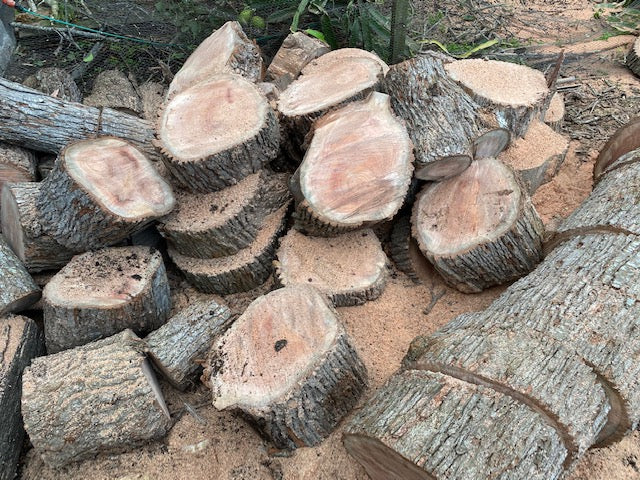
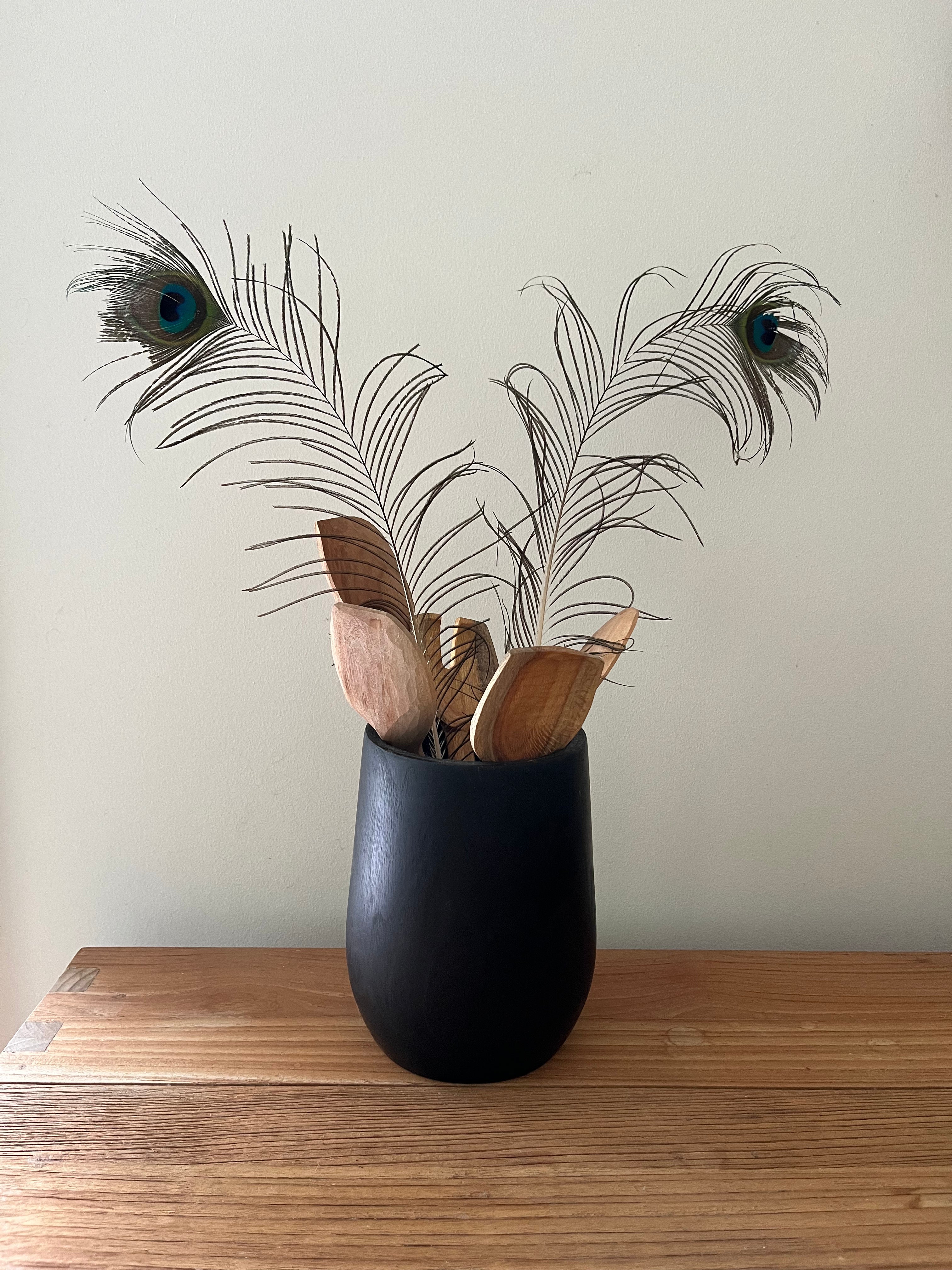
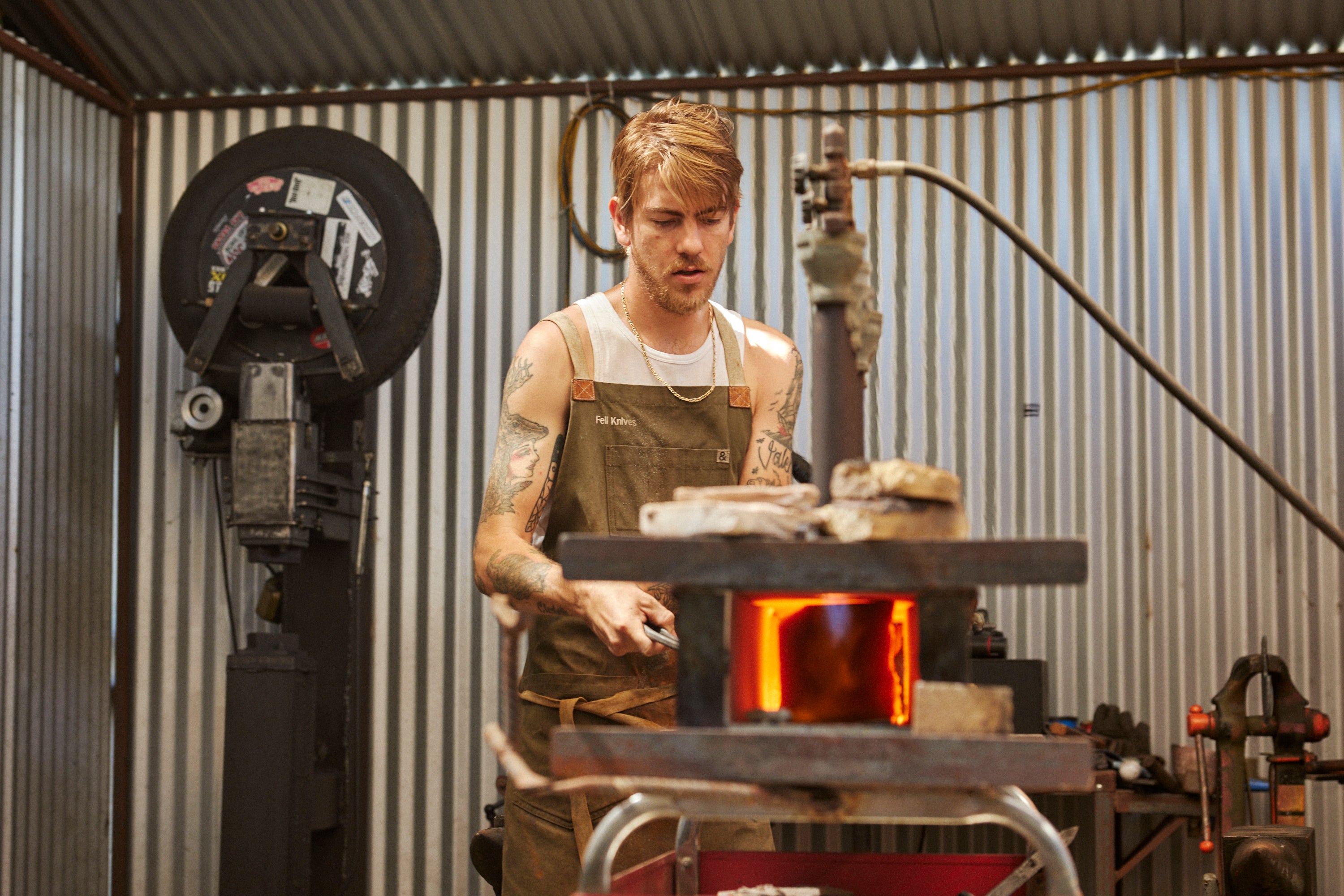
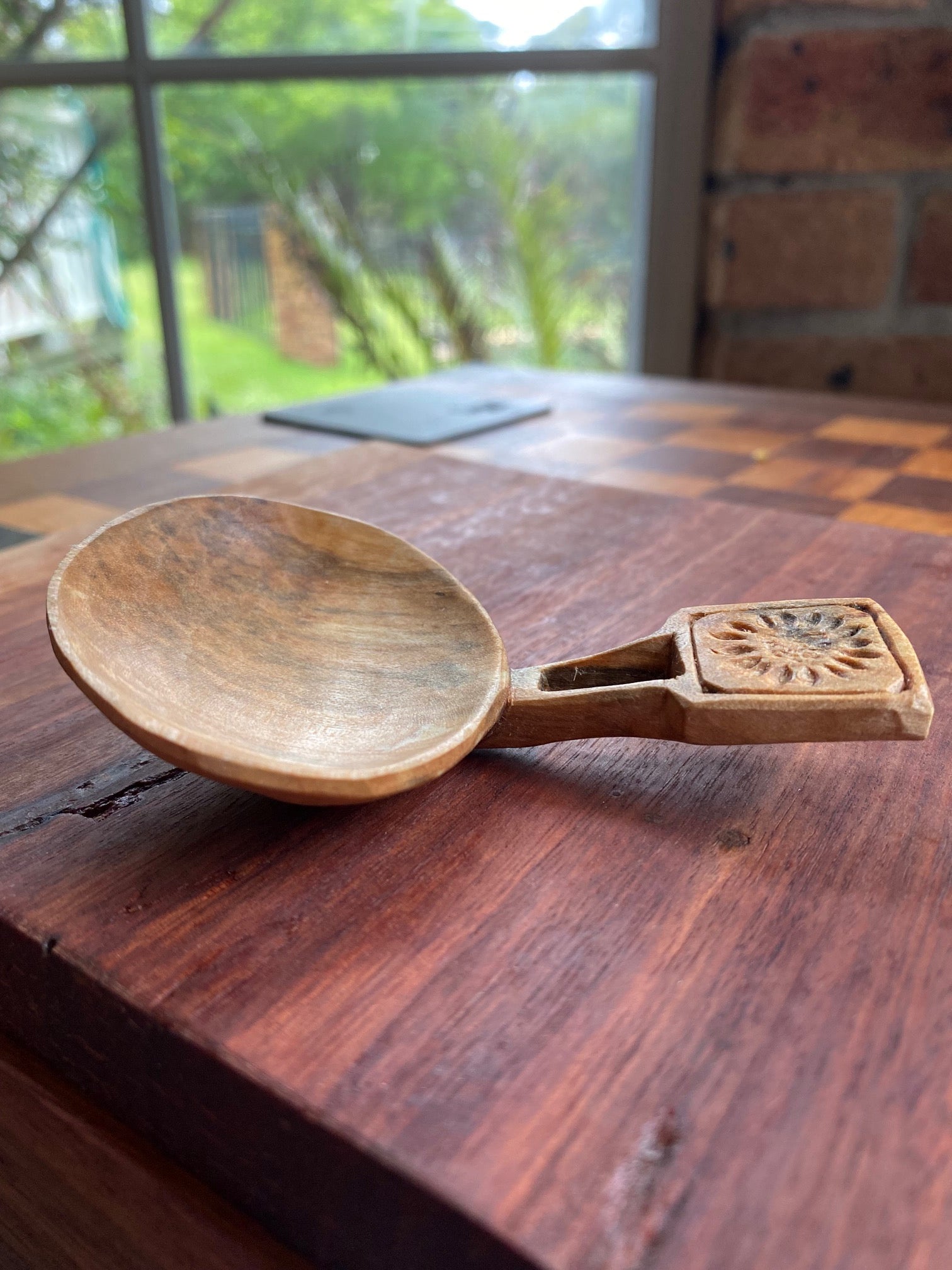
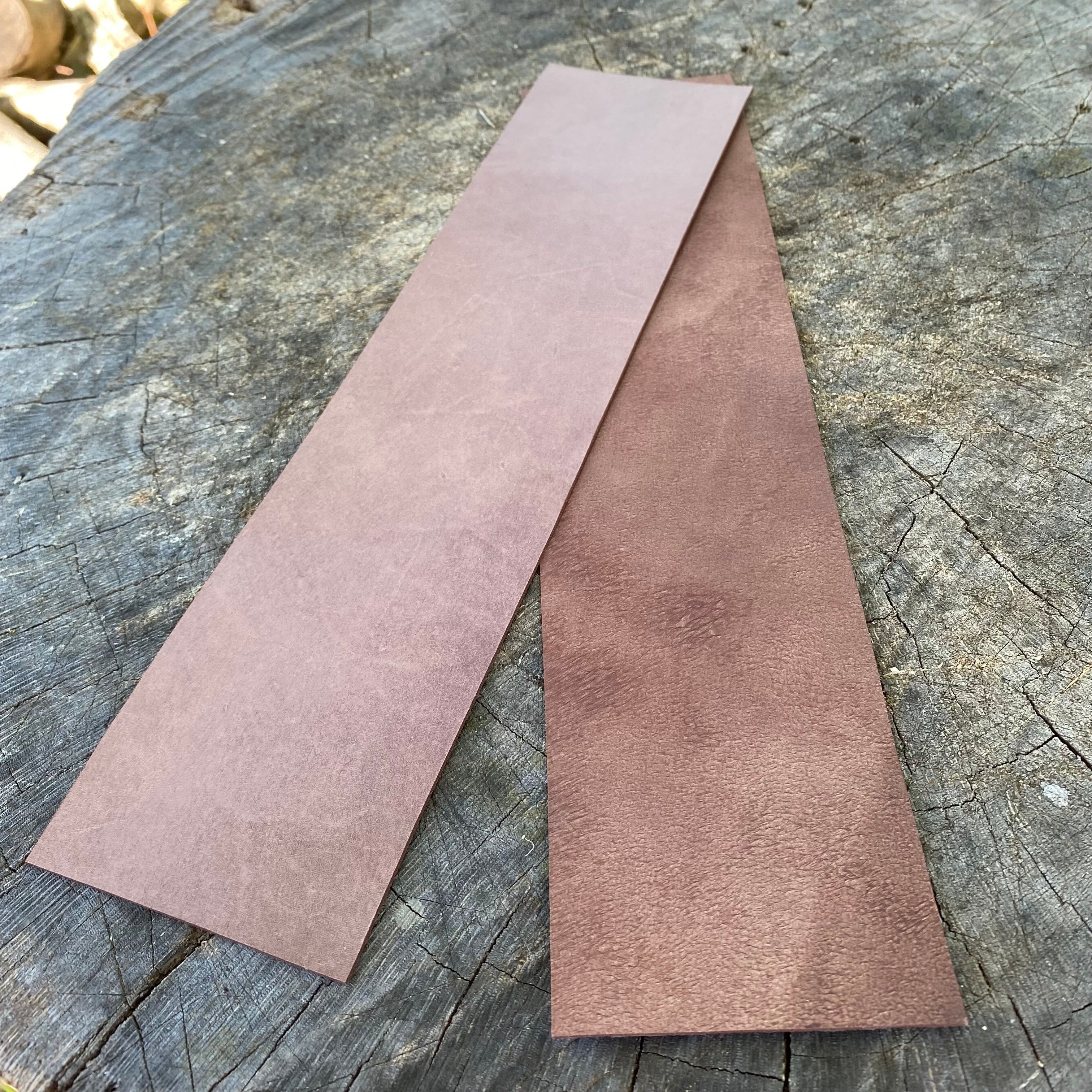
Share:
Curly Questions with Pete Von Trott
What are the benefits of spoon carving?
15 comments
This is a great list thank you! However I am about to start carving and I don’t know where to find these woods in the NT. Does anyone happen to know of a stockist in Darwin? Or is a plank of pine from the local Bunnings good enough? Thanks.
I have only just started carving and don’t know where to find all of these woods I live on the coast Sorrento WA Any further info would be appreciated
@Tobias and @woodtamer
RE: ficus wood
I think you will find that the sap in only just under the thin bark and not in the wood itself.
It is almost white wood that seasons to a relatively bright pale yellow
Straight grain that is relatively easy to carve… but when seasoned it is damn hard!
I have found no allergy issues with the few items I have carved from ficus
A self-seeded one that grew in our yard in the wrong spot and only ever had longish fruit that was never moist just dry inside… so out it went, saving a few of the largest sections
When left some bug/borer decided that it was not too hard and made a mess under the bark and bored many holes in the timber so looks like I won’t be carving any more for a while :-)
What about white gum/ghost gum as a wood for spoon carving? I’ve just had to clear some overhanging branches and thought I could have a crack at carving a couple of spoons.
I am after soft wood to carve blocks for my printing Art. What would u recommend please? Not want a high quantity, as it is only to make print stamps.
Many thanks,Vicki